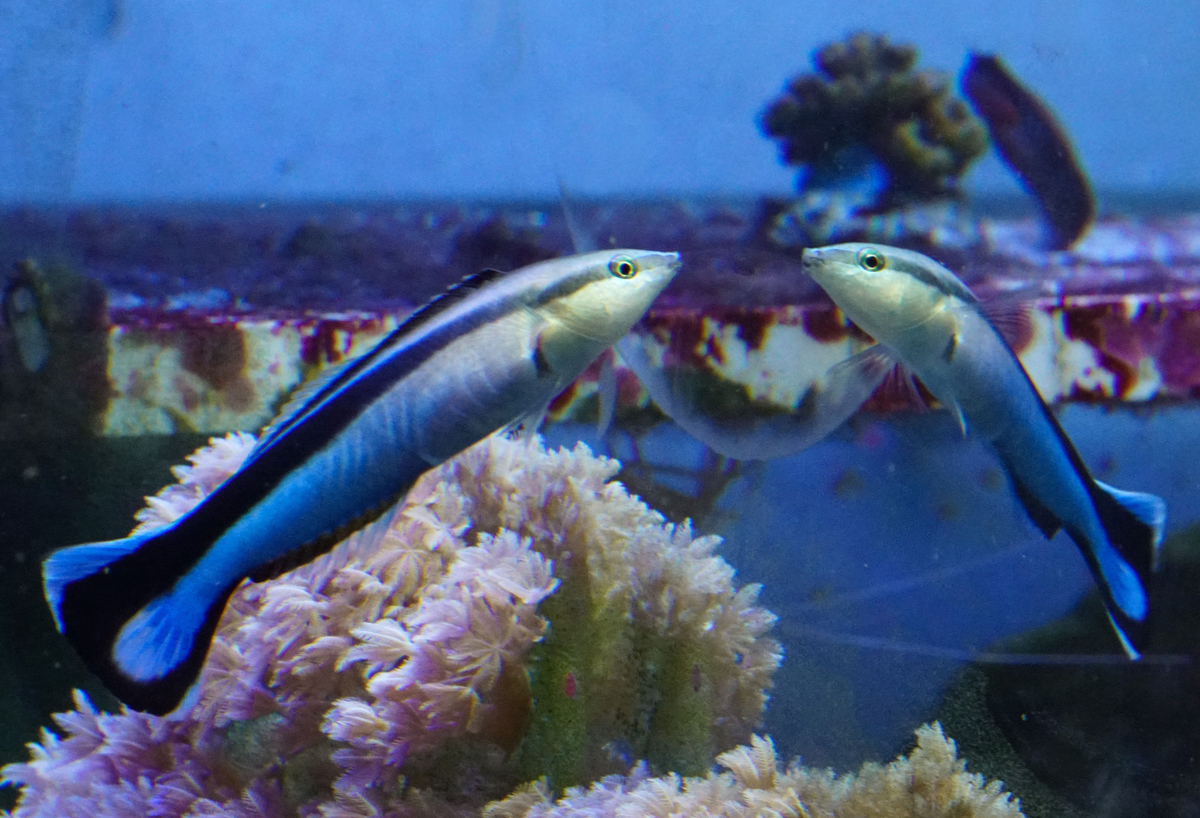
Are fish aware of themselves?
Researchers from the Max Planck Institute for Ornithology in Radolfzell, the University of Konstanz, and Osaka City University report that cleaner wrasse respond to their reflection
The ability to perceive and recognise a reflected mirror image as self is considered a hallmark of cognition across species. Now researchers from the Max Planck Institute for Ornithology in Radolfzell, the University of Konstanz, and Osaka City University report that cleaner wrasse respond to their reflection and attempt to remove marks on its body during the mirror test. The finding suggests that fish possess far higher cognitive powers than previously thought, and ignites debate over how scientists assess the intelligence of animals that are so unlike humans.
To test for mirror self-recognition in fish, the researchers applied the classic ‘mark’ test to the cleaner wrasse (Labroides dimidiatus), a marine fish best known for its behaviour of “cleaning” ectoparasites from client fish. The scientists placed a coloured mark on fish in a location that can only be seen in a mirror reflection. In order to gain a ‘pass’, the test requires that the animal must touch or investigate the mark, which demonstrates perception of the reflected image as itself. This is a challenge for an animal such as a fish that lacks limbs and hands.
The researchers observed that fish attempted to remove the marks by scraping their bodies on hard surfaces after viewing themselves in the mirror. Fish never attempted to remove transparent marks in the presence of a mirror, or coloured marks when no mirror was present – suggesting that marked fish were responding to the visual cue of seeing the mark on themselves in the mirror. Further, unmarked fish did not attempt to remove marks from themselves when interacting with a marked fish across a clear divider, nor did they attempt to remove marks placed on the mirror itself. This indicates that fish were not innately reacting to a mark resembling an ectoparasite anywhere in the environment, for instance due to hard-wired feeding responses.
To the scientists the results provide clear evidence of behaviours that appear to pass through all phases of the mirror test. However, the interpretation of what these mean is less clear: Does a ‘pass’ mark in the mirror test demonstrate that fish possess self-awareness – a cognitive trait thought only to be present in primates and some other mammals? Or, can the mirror test be solved by very different cognitive processes than previously thought?
“The behaviours we observe leave little doubt that this fish behaviourally fulfils all criteria of the mirror test as originally laid out. What is less clear is whether these behaviours should be considered as evidence that fish are self-aware – even though in the past these same behaviours have been interpreted as self-awareness in so many other animals,” says Alex Jordan, Principal Investigator at the Max Planck Institute for Ornithology and the University of Konstanz.
Depending on one’s position, one might reject the interpretation that these behaviours in a fish satisfy passing the test at all. However, this would invalidate the test as a whole as the fish’s behaviours are functionally similar to those of other species that have passed the test. On the other extreme, one might interpret these results as evidence that fish are self-aware. “Personally, I find the most parsimonious interpretation to be that these fish do pass the test as given, but this doesn’t mean they are self-aware. Rather they come to recognise the reflection as a representation of their own bodies without the involvement of self-consciousness. Given this, we should critically evaluate whether the mark test remains the gold-standard for awareness testing in animals,” says Jordan.
Facts:
- Original publication: Kohda M, Hotta T, Takeyama T, Awata S, Tanaka H, Asai J-y, et al. (2019) If a fish can pass the mark test, what are the implications for consciousness and self-awareness testing in animals? PLoS Biol 17(2): e3000021. https://doi.org/10.1371/journal.pbio.3000021
- URL: http://journals.plos.org/plosbiology/article?id=10.1371/journal.pbio.3000021
- Joint study conducted by researchers from the Max Planck Institute for Ornithology (Radolfzell), the University of Konstanz and Osaka City University (OCU) suggests that fish may be self-aware.
- Cleaner wrasse Labroides dimidiatus passes the mirror test, a classic test case for self-awareness in animals. Interpretation of the results raises challenging questions about animal intelligence and the methods employed to study it.
Press release: No. 11/2019
